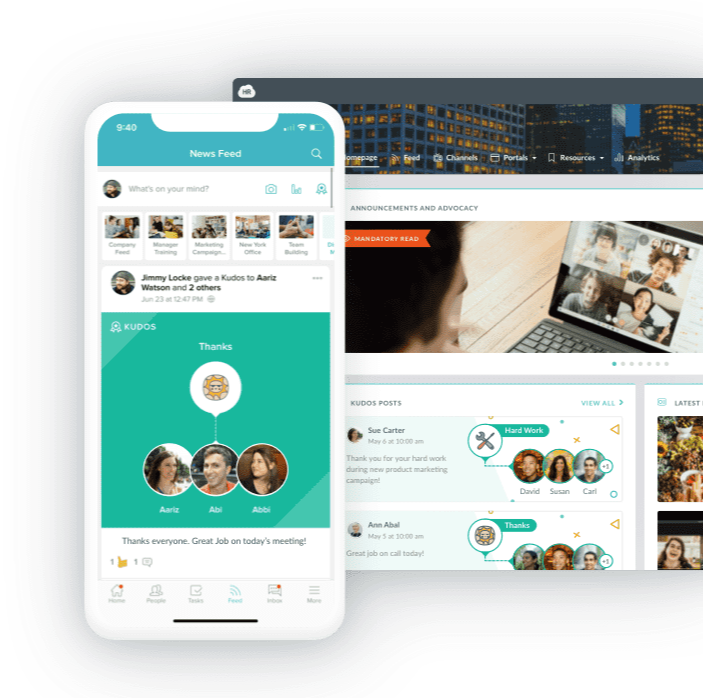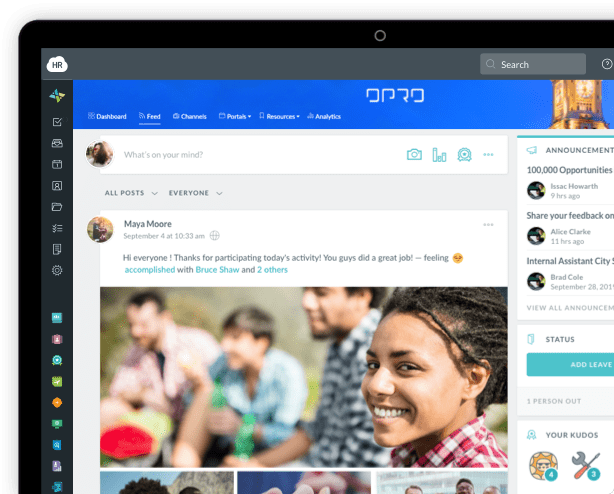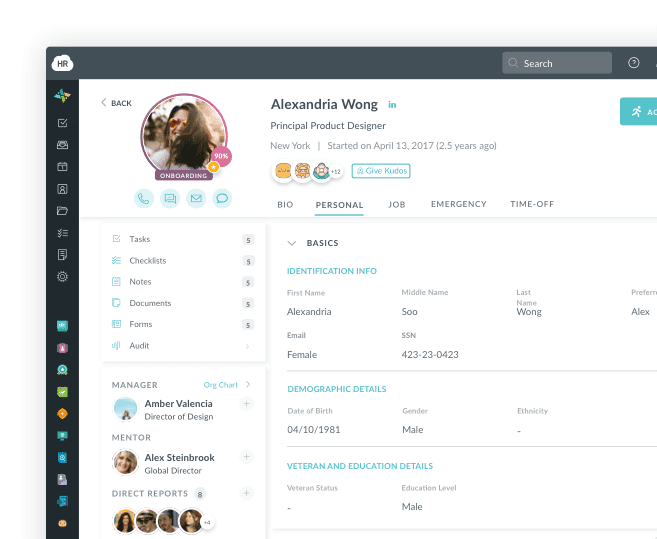The Future of HR Tech in Software Development: Trends and Innovations

The HR landscape has undergone massive changes in the past few years. Organizations are looking to adapt and innovate throughout the Employee Lifecycle to maintain competitiveness in the business landscape. With innovative technologies like Big Data, AI, and Machine Learning, HR professionals can streamline different aspects of recruitment.
Currently, a majority of businesses have integrated robust HR solutions into their operations. Such a transition to the digital realm assisted organizations in utilizing their human resources efficiently and effectively via cloud, mobile, and social media. HR tech mainly consists of advanced analytics, learning platforms, and virtual technology that advances the overall recruiting process.
The following article is about the latest trends and developments in the field of HR technology that you need to pay attention to.
What is HR tech?
HR tech is an umbrella term that describes hardware and software solutions to automate prime tasks corporate human resource executives perform.
HR tech solutions are primarily aimed at streamlining the hiring process, increasing employee morale, and enhancing digital transformation to maximize organizational performance.
In 2023, the HR tech industry will evolve rapidly, particularly in key areas. A report predicts significant growth, estimated at $39.90 billion by 2029, with a CAGR of 7.5%. This growth is driven by the rising demand for advanced HR technologies across industries.
Harnessing the potential of tech in HR
Recent HR tech trends drive significant advancements in business operations. As the HR function evolves and plays an increasingly pivotal role in many organizations, technology solutions are revolutionizing HR functions, from onboarding new employees to maintaining HR records or enhancing employer branding.
In the coming years, we can anticipate the following emerging trends in human resource tech:
-
Talent acquisition and recruitment
HR managers and leaders heavily rely on technology such as Applicant Tracking Systems (ATS) for automated job posting and candidate screening. AI tools assess skills, conduct video interviews, and predict candidate fit.
-
Employee training and deployment
HR technology solutions make training and onboarding programs a breeze. Leaders use learning management systems (LMS) for interactive online training, progress monitoring, and self-learning. Virtual reality and augmented reality improve remote onboarding. Digital HR platforms save paperwork, increasing efficiency and decreasing mistakes.
-
Performance management
HR tech simplifies continuous employee performance monitoring and evaluation. It supports goal setting, progress tracking, and efficient performance reviews for HR leaders. This software enables real-time information sharing, mutual recognition, and data analysis for performance improvement.
-
Employee engagement
HR tech enhances employee engagement and fosters improved organizational communication. For example, Workmates helps the organization to revolutionize their employee engagement. With workmates, you can offer attractive rewards, make important company announcements, track multiple campaigns, and collect staff feedback via surveys. In addition to this, it lets you access real-time reports keep a tab on employee productivity.
Social Intranet Software that Encourages Employee Communication

Emerging HR tech trends
The human resources industry has undergone unprecedented changes over the past few years. The work habits of HR professionals have drastically changed as they have started improving their skills through a diverse workforce and the introduction of artificial intelligence (AI) and machine learning (ML).
Let’s inspect the HR technology trends in detail:
-
Hybrid work-friendly technologies
In the coming years, we are definitely going to witness revolutionary changes in the traditional hiring models. The growth of a hybrid work culture post-pandemic propels this change forward. As per a source, one out of every six workers is looking forward to hybrid or freelance work, and their numbers are expected to reach $86.5 million by 2027.
Here are the tech innovations that make hybrid working seamless:
-
Time and attendance tracking systems: Hybrid work needs constant tracking of attendance and time completed by the employees. Tools such as HR cloud's Time Tracking module offer visibility to HR teams by enabling employees to track their timeoffs work hours, and offer real-time visibility.
-
Collaboration and communication tools: These tools facilitate seamless communication and collaboration among in-office and hybrid settings. Microsoft Teams, Google Workspace, Asana, Trello, Slack, Jira, etc., are popular communication and collaboration tools.
-
Virtual learning and development platforms: With the increase of hybrid platforms, virtual learning platforms like Udemy, Coursera, and Linkedin Learning enable employees to gain the necessary skills and knowledge that gives them an extra edge to their work.
-
Mobile HR apps: Apps like HR Cloud's employee app enable employees to access HR info, request time off, check pay stubs, and manage HR tasks by making a few taps on their smartphones.

-
AI and Machine Learning
IEEE global study anticipated that three pivotal technological transformations in the future revolve around the following key areas: Cloud computing (20%), AI and machine learning (21%), and 5G (17%).
In addition, many entrepreneurs believe AI will propel innovation in the coming 5-10 years. Talking in the context of HR, AI, and ML supports recruitment professionals to streamline their tasks to achieve unparalleled levels of excellence.
By harnessing the potential of AI and machine learning, enterprises stay at the forefront of innovation and give them a competitive edge in the dynamically changing landscape.
Examples:
-
AI-powered resume screening algorithms can swiftly and correctly analyze massive numbers of resumes, selecting top prospects based on preset criteria.
-
ML algorithms can analyze previous recruiting data to predict future applicant performance, assisting HR departments in making data-driven hiring decisions.
-
AI-powered onboarding solutions may give new recruits personalized onboarding experiences by providing appropriate resources and training materials based on their positions and skill sets.
Take Advantage of E-Forms, Time-Off Tracking, and Other Powerful Features to Help Drive Your Bussines
Learn More about HRMS
-
HR software development
Integration of different types of software in human resource management is gradually becoming an emerging trend in the workplace. Let’s look at them individually -
-
Human Resource Information Systems: Human Resource Information Systems offers a dedicated cloud storage to store crucial employee information such as employee benefits, history, personal details, performance records, etc. Such systems can automate payroll, streamline tasks, and leave management.
-
Performance Management Systems: Performance Management Systems assist HR managers and teams in tracking the performance of employees, offering feedback, conducting performance evaluations, and setting crucial goals.
-
Applicant Tracking Systems: This type of software caters to hiring and recruiting by letting the HR heads and managers track applicants, manage job profiles, and organize data of candidates.
-
Learning Management Systems: Learning Management Systems streamline employee training and development by offering a centralized hub for creating, delivering, and tracking educational programs. They provide course creation, content management, assessment tools, and reporting capabilities.
-
Custom Software Development: Organizations harness custom software development services to build tailor-made HR solutions. These
custom software solutions align with their core business goals, effectively providing a competitive advantage in managing human resources.
-
Employee safety and support
This trend is closely tied to employee well-being, safety, and support. During the pandemic, work-life balance and workplaces have become constant. Ensuring a safe and healthy work environment is crucial for maintaining a strong workforce, especially during labor shortages and recruitment challenges.
Here are some real-life examples of employee support and safety:
-
Employee wellness platforms: Employee wellness platforms let employees access different well-being programs and resources. Besides, they cover meditation apps, support for mental health, and employee assistance programs.
-
Virtual health services: Virtual health solutions like telemedicine apps allow employees to access healthcare services on a remote basis. Thanks to telemedicine apps, employees can access 24*7 consultation services, get prescriptions, book tests, access medical advisory, and keep a tab on their health.
Final Words
The future of HR tech in software development is marked by significant innovations and trends reshaping how HR professionals operate. Integrating AI and ML, data-driven decision-making, remote work support, employee experience platforms, automation, gamification, and diversity and inclusion initiatives all contribute to a more efficient, inclusive, and engaging workplace. These factors influence offshore software development cost. As technology advances, HR tech's role in software development will only become more integral, ensuring that organizations can attract, retain, and nurture the best talent in the industry.
Author Bio:
This article is written by a marketing team member at HR Cloud. HR Cloud is a leading provider of proven HR solutions, including recruiting, onboarding, employee communications & engagement, and rewards & recognition. Our user-friendly software increases employee productivity, delivers time and cost savings, and minimizes compliance risk.
Keep Reading
Balancing Technology and the Human Touch in Employee Engagement
Companies are taking employee engagement very seriously because it is one of the ways of
Building Strong Teams: The Power of Team Bonding Exercises
Never overestimate the power of collaboration as a core element of effective team

